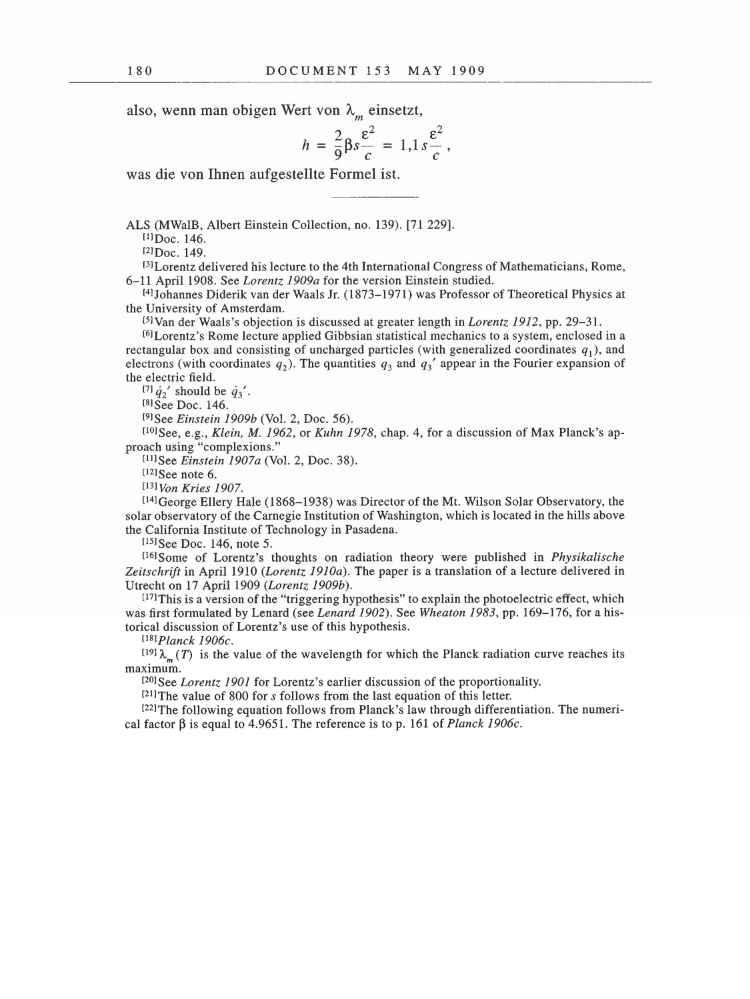180 DOCUMENT 153 MAY 1909 also, wenn man obigen Wert von Xm einsetzt, Ttl 2 E2 h = 9ßs- = 1,1s y c was die von Ihnen aufgestellte Formel ist. ALS (MWalB, Albert Einstein Collection, no. 139). [71 229]. [1]Doc. 146. [2]Doc. 149. [3]Lorentz delivered his lecture to the 4th International Congress of Mathematicians, Rome, 6-11 April 1908. See Lorentz 1909a for the version Einstein studied. [4]Johannes Diderik van der Waals Jr. (1873-1971) was Professor of Theoretical Physics at the University of Amsterdam. [5]Van der Waals's objection is discussed at greater length in Lorentz 1912, pp. 29-31. [6]Lorentz's Rome lecture applied Gibbsian statistical mechanics to a system, enclosed in a rectangular box and consisting of uncharged particles (with generalized coordinates q1), and electrons (with coordinates q2). The quantities q3 and q3 appear in the Fourier expansion of the electric field. [7]q2' should be q3'. [8]See Doc. 146. [9]See Einstein 1909b (Vol. 2, Doc. 56). [10]See, e.g., Klein, M. 1962, or Kuhn 1978, chap. 4, for a discussion of Max Planck's ap- proach using "complexions." [11]See Einstein 1907a (Vol. 2, Doc. 38). [12]See note 6. [13]Von Kries 1907. [14]George Ellery Hale (1868-1938) was Director of the Mt. Wilson Solar Observatory, the solar observatory of the Carnegie Institution of Washington, which is located in the hills above the California Institute of Technology in Pasadena. [15]See Doc. 146, note 5. [16]Some of Lorentz's thoughts on radiation theory were published in Physikalische Zeitschrift in April 1910 (Lorentz 1910a). The paper is a translation of a lecture delivered in Utrecht on 17 April 1909 (Lorentz 1909b). [17]This is a version of the "triggering hypothesis" to explain the photoelectric effect, which was first formulated by Lenard (see Lenard 1902). See Wheaton 1983, pp. 169-176, for a his- torical discussion of Lorentz's use of this hypothesis. [18]Planck 1906c. [19]Xm (T) is the value of the wavelength for which the Planck radiation curve reaches its maximum. [20]See Lorentz 1901 for Lorentz's earlier discussion of the proportionality. [21]The value of 800 for s follows from the last equation of this letter. [22]The following equation follows from Planck's law through differentiation. The numeri- cal factor ß is equal to 4.9651. The reference is to p. 161 of Planck 1906c.
